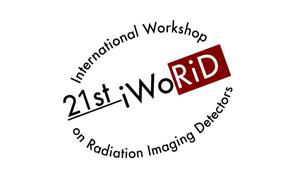Speaker
Description
Gotthard-II is a charge-integrating microstrip detector developed for the European X-ray Free-Electron Laser (EuXFEL) for experiments using hard X-rays of 5 keV – 20 keV. Thanks to its excellent single photon sensitivity, large dynamic range as well as high frame rate of 4.5 MHz in burst mode, its potential scientific applications at the EuXFEL include X-ray absorption/emission spectroscopy, hard X-ray high resolution single-shot spectrometry (HiREX), energy dispersive experiments, beam diagnostics, as well as veto signal generation for large area pixel detectors currently being operated at the EuXFEL, $e.g.$ the Adaptive Gain Integrating Pixel Detector (AGIPD), the Large Pixel Detector (LPD) and others. In addition to its target applications at the EuXFEL, the Gotthard-II detector can also be operated at a frame rate of > 660 kHz in continuous mode for extended usage at synchrotron radiation sources and for the future EuXFEL upgrade to CW mode. Gotthard-II uses a silicon microstrip sensor with a pitch of 50 µm or 25 µm and with 1280 or 2560 channels wire-bonded to readout chips (ROCs). In the ROC, the full signal chain consisting of a dynamic gain switching preamplifier (PRE), a fully differential Correlated-Double-Sampling (CDS) stage, an Analog-to-Digital Converter (ADC) with a sampling/conversion rate of >20 MS/s as well as a Static Random-Access Memory (SRAM) capable of storing all the 2700 images in an EuXFEL bunch train has been implemented. The Gotthard-II ROC is designed based on the independent characterization results from the analogue front-end (PRE and CDS) and ADC test structures. Each ROC, which reads out 128 strips, has dimensions of 6.12x6.64 mm$^{2}$ and 61 pads to the readout PCB, for a total of more than 30 million transistors. The Gotthard-II ROC is currently being fabricated using UMC-110nm technology and is expected to be available in mid May 2019. The performance of the final ROC in terms of noise, linearity, dynamic range, coupling between channels and speed will be investigated according to the specifications and discussed in this talk.
